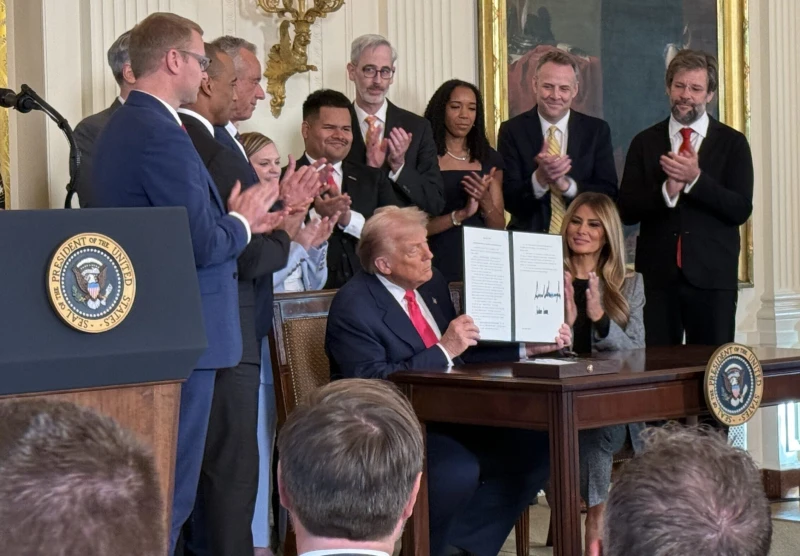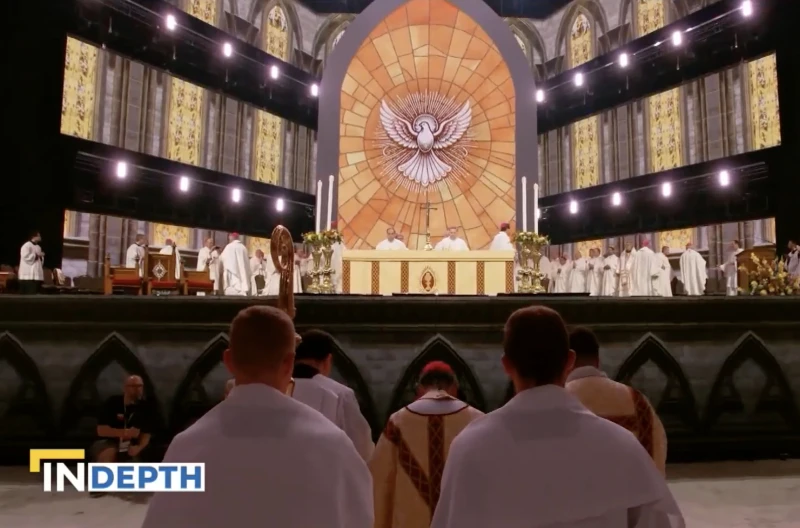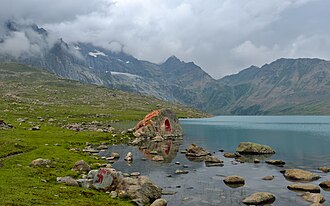

President Donald Trump signs an executive order related to foster care and foster parents on Nov. 13, 2025. / Credit: Alliance Defending Freedom
CNA Staff, Nov 15, 2025 / 10:00 am (CNA).
U.S. President Donald Trump signed an executive order Thursday that aims to improve the nation’s foster care system, including the modernization of the current child welfare system, the development of partnerships with private sector organizations, and prioritizing the participation of those with sincerely held religious beliefs.
The executive order issued Nov. 13 states that the Trump administration is “dedicated to empowering mothers and fathers to raise their children in safe and loving homes.”
The order says current problems with the foster care system include overworked caseworkers, antiquated information systems, and policies that “prohibit qualified families from serving children in need as foster and adoptive parents because of their sincerely-held religious beliefs or adherence to basic biological truths.”
The legal group Alliance Defending Freedom (ADF) has represented Christian families who were barred from serving as foster parents because of their faith, suing on behalf of Brian and Katy Wuoti and Bryan and Rebecca Gantt after the Vermont Department for Children and Families informed the two families that their belief that persons cannot change biological sex and that marriage is only between a man and a woman precluded them from serving as foster parents in the state.
Despite describing the Wuotis and the Gantts as “amazing,” “wonderful,” and “welcoming,” state officials revoked the couples’ foster care licenses after they expressed those beliefs. The state said these beliefs made them “unqualified” to parent any child, regardless of the child’s age, beliefs, or identity.
ADF Senior Counsel Johannes Widmalm-Delphonse, who represents the Wuotis, Gantts, and other Christian families who are prohibited from fostering in lawsuits in Massachusetts, Oregon, Vermont, and Washington, told CNA that he hopes the executive order will lead to the states “prioritizing the best interests of children rather than ideological agendas.”
In the face of shortages of foster families, he said the states should be “pursuing a big tent, welcoming as many loving families as possible. But they’re doing the opposite while children who need foster care are sleeping in unlicensed group homes, police stations, and hospitals.”
Trump’s executive order directs the department of Health and Human Services, the White House Faith Office, and the Office of Intergovernmental Affairs to “take appropriate action to address state and local policies and practices that inappropriately prohibit participation in federally-funded child-welfare programs by qualified individuals or organizations based upon their sincerely-held religious beliefs or moral convictions.”
It also directs those agencies to “increase partnerships between agencies and faith-based organizations and houses of worship to serve families” involved with the foster care system.
Widmalm-Delphonse told CNA it is “difficult to say how the states will respond” to the executive order, indicating that he hopes either the order or the pending lawsuits will lead to changes in their “discriminatory” policies against families of faith.
“The path the states should take is obvious: It’s a win-win when you open up foster care to people of faith and put the interests of children first,” he said.
Read More![Arizona man sentenced to prison after hoax bomb threats at Christian churches #Catholic
null / Credit: Chodyra Mike 1/Shutterstock
CNA Staff, Nov 11, 2025 / 11:40 am (CNA).
An Arizona man will serve more than half a decade in prison after he carried out multiple hoax bomb threats at churches in the western U.S.The U.S. Department of Justice said in a press release that 46-year-old Phoenix resident Zimnako Salah would spend six years in prison after his 2025 conviction in the terror plot.From September to November 2023 Salah “traveled to four Christian churches in Arizona, California, and Colorado” with black backpacks, according to the Department of Justice. At two churches he was turned away by security, while at two others he “planted” the backpacks, causing congregants to believe they contained bombs, the Justice Department said.Though the planted backpacks were in fact hoaxes, Salah reportedly had “been building a bomb capable of fitting in a backpack,” the department said. FBI investigators said they seized “component parts of an improvised explosive device” from a storage unit being rented by Salah.Salah also had been actively searching for “extremist propaganda online,” the government said, including searches for videos such as “infidels dying.”The jury that convicted Salah in 2025 found that he “targeted the church because of the religion of the people who worshipped there, making the offense a hate crime.”U.S. District Judge Dena Coggins levied a $10,000 fine against Salah, telling him he “failed to take responsibility for [his] actions.”U.S. Attorney Eric Grant said Salah’s ultimate goal appeared to be “many deaths and injuries.”“Thanks to the action of church security, local law enforcement, and the FBI, this defendant was stopped before he had a chance to carry out the crimes he sought to commit,” he said.Assistant Attorney General Harmeet Dhillon, meanwhile, said in the press release that criminals “who target people because of their faith will face the full force of federal law.”“The Department of Justice will continue to protect the rights of all people of faith to worship and live free from fear, and we will hold accountable anyone who threatens or harms them,” she said.](https://unitedyam.com/wp-content/uploads/2025/11/arizona-man-sentenced-to-prison-after-hoax-bomb-threats-at-christian-churches-catholic-null-credit-chodyra-mike-1-shutterstockcna-staff-nov-11-2025-1140-am-cna-an-arizona-man-will-se.webp)





![Native American group loses religious freedom appeal at Supreme Court #Catholic
On Oct. 6, 2025, the U.S. Supreme Court denied a rehearing of the case filed by Apache Stronghold, a coalition of Native Americans and their supporters, that would have prevented the sale of a Native American sacred site to a mining company. / Credit: Photo courtesy of Becket
CNA Staff, Oct 8, 2025 / 12:00 pm (CNA).
A Native American group working to stop the destruction of a centuries-old religious ritual site has lost a last-ditch appeal to the U.S. Supreme Court to halt the transfer and obliteration of the Arizona parcel.The Supreme Court in an unsigned order on Oct. 6 said Apache Stronghold’s petition for a rehearing had been denied. The court did not give a reason for the denial.Justice Neil Gorsuch would have granted the request, the order noted. Justice Samuel Alito, meanwhile, “took no part in the consideration or decision” of the order. The denial likely deals a death blow to the Apache group’s attempts to halt the destruction of Oak Flat, which has been viewed as a sacred site by Apaches and other Native American groups for hundreds of years and has been used extensively for religious rituals. The federal government is selling the land to the multinational Resolution Copper company, which plans to destroy the site as part of a copper mining operation. The coalition had brought the lawsuit to the Supreme Court earlier this year under the federal Religious Freedom Restoration Act, arguing that the sale of the site would violate the decades-old federal statute restricting the government’s ability to encroach on religious liberty. The high court in May refused to hear the case. Gorsuch dissented from that decision as well, arguing that the court “should at least have troubled itself to hear [the] case” before “allowing the government to destroy the Apaches’ sacred site.”Justice Clarence Thomas dissented from the May ruling as well, though he did not add his dissent to the Oct. 6 denial of the appeal. In a statement, Apache Stronghold said that while the decision was "deeply disappointing, the fight to protect Oak Flat is far from over." The group vowed to "continue pressing our cases in the lower courts.""Oak Flat deserves the same respect and protection this country has long given to other places of worship," the group said. The coalition has garnered support from major Catholic backers in its religious liberty bid. Last year the U.S. Conference of Catholic Bishops joined an amicus brief arguing that lower court decisions allowing the sale of Oak Flat represent “a grave misunderstanding” of religious freedom law. The Knights of Columbus similarly filed a brief in support of the Apaches, arguing that the decision to allow the property to be mined applies an “atextual constraint” to the federal religious freedom law with “no grounding in the statute itself.”Though Apache Stronghold appears to have exhausted its legal options, the U.S. Court of Appeals for the 9th Circuit said on Aug. 18 that the Oak Flat site would not be transferred to Resolution Copper amid emergency petitions from the San Carlos Apache Tribe as well as the Arizona Mining Reform Coalition. That dispute is still playing out at federal court.](https://unitedyam.com/wp-content/uploads/2025/10/native-american-group-loses-religious-freedom-appeal-at-supreme-court-catholic-on-oct-6-2025-the-u-s-supreme-court-denied-a-rehearing-of-the-case-filed-by-apache-stronghold-a-coalition-of-na.webp)


